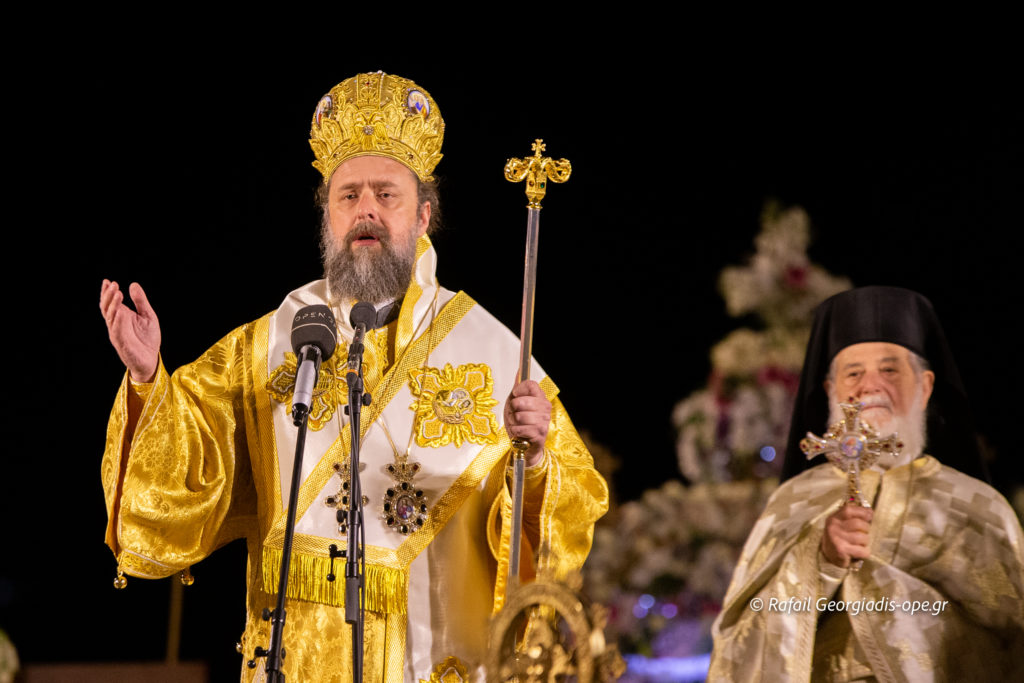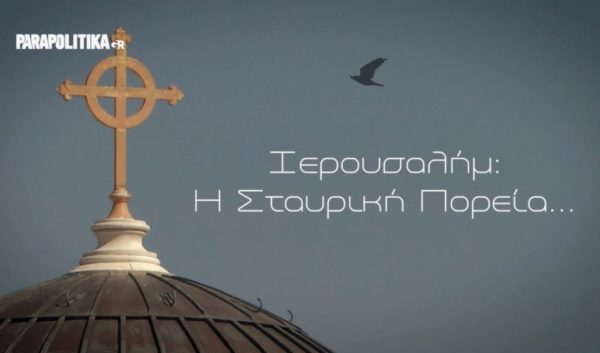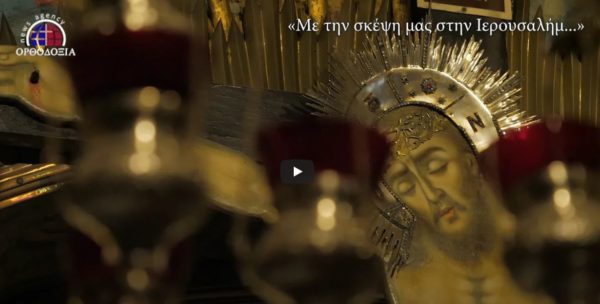Canonical visit to Minnesota

His Grace Bishop Longin of New Gracanica-Midwestern America in canonical visit to parishes in Minnesota
Serbs emigrated to Minnesota at the turn of the 20th century and settled in three highly industrialized areas.: The Iron Range, Duluth and the St. Paul-Minneapolis metropolitan area (The Тwin Cities). In all these regions, Serbs built their churches.
In the afternoon of March 12, 2021, His Grace Bishop Longin of New Gracanica and Midwestern America, arrived in Duluth, where an Vesper service was held in Saint George’s church.
The service was followed by a spiritual conversation and fellowship with priest Kristijan Petrovic and parishioners. The President of the Church Administration, Mrs. Petty Thompson, informed the competent Bishop about the burning issues of that important parish and the ways to resolve them. The good hosts showed the guests the sights of their city and the exceptional true Abrahamic hospitality.
The first Serbs came to Duluth area between 1903 and 1905. The Church of St. George was built in 1924. The foundations and the temple were consecrated by then Archimandrite Mardarije (Uskokovic), and the great consecration was performed on August 23, 1942. The iconostasis made by Mirko Jordic was consecrated on August 16, 1946. The icons are the work of artist David Erickson, a Swede by birth. At that time, the priest was Djordje Milosavljevic. With the arrival and appointment of protosynchellos Nikanor (Kalika) in 1947, the Church-School Municipality bought land for the parish house, which was consecrated on August 7, 1950.
Many Serbian priests served in this parish, some of them for a longer period, and some only for a few years. Archpriest Bozidar (Dragicevic) stayed the longest. All of them, according to their talent and strength of faith, contributed to the building of spiritual life and the preservation of religious and national identity.
On the eve of the beginning of Lent, the Church of the Holy Archangel Michael in Hibbing was visited by Bishop Longin, who conducted a festive Evening service. Priests Constantine Franck and Milos Zivkovic, as well as Archdeacon Milovan Gogic, concelebrated to the Bishop. Popadija Ksenija and the local choir sang responses. At the end of the festive Vesper service, the Bishop spoke, and after that he talked with the parishioners present. On behalf of the Church Administration, President Shari Majkic and parish priest Constantine Franck expressed joy over the visit of His Grace with an entourage from Chicago.
The parish in Hibbing is a valuable parish, small in number of members, most of whom are second and third generation Serbs born in America. All services are conducted in English. The new church was built in the rotunda style, and was consecrated on May 21, 1972 by Bishop Firmilijan (Ocokoljic). Icons in the modernist style were made by priest Emilijan (Glocar). A few years ago, they were replaced by icons made at St. Anthony’s Monastery in Arizona. Several priests served in this parish, and priest Petar Prica served for the longest time (28 years), whom the faithful in Hibbing still remember and often mention with love.
On Cheesefare Sunday, the Holy Liturgy was served in the church of St. Basil of Ostrog in Chisolm. His Grace Bishop Longin was concelebrated by priests Kristijan Petrovic from Duluth, Milos Zivkovic, a local parish priest; and Constantine Franck from Hibbing, as well as Archdeacon Milovan (Gogic). A local choir sang responses, assisted by President Mr. Jordan and chanters from Hibbing and Duluth.
Bishop Longin taught all the topics on the subject of the Sunday Gospel, emphasizing the importance of repentance, forgiveness and confession for progress in the spiritual life: – The upcoming Lent is the best school we need to go through and a chance to analyze our lives and change for the better.
The church was filled with parishioners from all three parishes, as well as guests from North Dakota. Their harmony and unity are the key to a secure future in that part of America. After the service, a home-cooked lunch was served for everyone in the church hall. The Bishop talked with members of the Church Board of Chisolm and Hibbing about the long-awaited unification. It is absolutely necessary for these, now small parishes by their number, to unite their forces and thus prolong the duration of Serbian parishes in that part of the Diocese.
Furthermore, according to the testimony of the parish chronicle, the Serbian church in Chisolm was built by miners, Serbian immigrants from Lika, Bosnia and Montenegro. Their way of life was common for Serbian immigrants of that time, who inhabited mining camps and small towns, and whose efforts enabled the construction of American industry. The Church of St. Basil is located on the Mesabi Iron Range, (an indigenous Ojibwe word that means a sleeping giant) and is the oldest Serbian Orthodox church in Minnesota. During the first few decades, the original church in Chilsom served thousands of Serbs for three generations, living and working in camps and places along a 100-kilometer-long iron chain. Today’s Church of St. Basil was built in 1972, it is located in a new and more convenient location, but for the Serbian founders, the story of the original church is inextricably linked to their early history of life in Minnesota. Serbian pioneers did hard physical work, but they had a rich church life. The climatic conditions did not affect them either. Serbian Christmas was usually the coldest day of the year, but it wasn’t much warmer for Easter either. Despite the weather conditions, they arrived an hour earlier before the service, warmed themselves around the basement stoves and waited for the Holy Liturgy to begin. Several priests served during the hundred-year history of that church, while priests Mladen Trbuhovic and Bogdan Zjalic stayed the longest. After the closure of the coal mine, many Serbs moved to different parts of America looking for employment, thus drastically reducing the number of parishioners. In addition to the church in Chisolm and the Church of St. Basil of Ostrog at Camp Angels in California (both from 1910), there is also a church dedicated to St. Basil of Ostrog in Lake Forest, Illinois.
Cheesefare Week is also known as Forgiveness Week. Many customs adorn the church service on that day. The Bishop and his entourage attended the Vesper service in Hibbing. The dinner was in the honorable home of the longtime leader of the church choir, Sister Gina. Bishop Longin, his entourage: deacon Milovan and reader Stefan, local priests Milos and Kosta with a group of parishioners, were welcomed by that noble woman with love and respect. It was a nice opportunity for the parishioners to talk to the Bishop, ask various questions and get the necessary information about the life of the Serbian Church on the American continent and beyond.
text and photography: reader Stefan М. Radovic
H αναδημοσίευση του παραπάνω άρθρου ή μέρους του επιτρέπεται μόνο αν αναφέρεται ως πηγή το ORTHODOXIANEWSAGENCY.GR με ενεργό σύνδεσμο στην εν λόγω καταχώρηση.
Ακολούθησε το ORTHODOXIANEWSAGENCY.gr στο Google News και μάθε πρώτος όλες τις ειδήσεις.



















